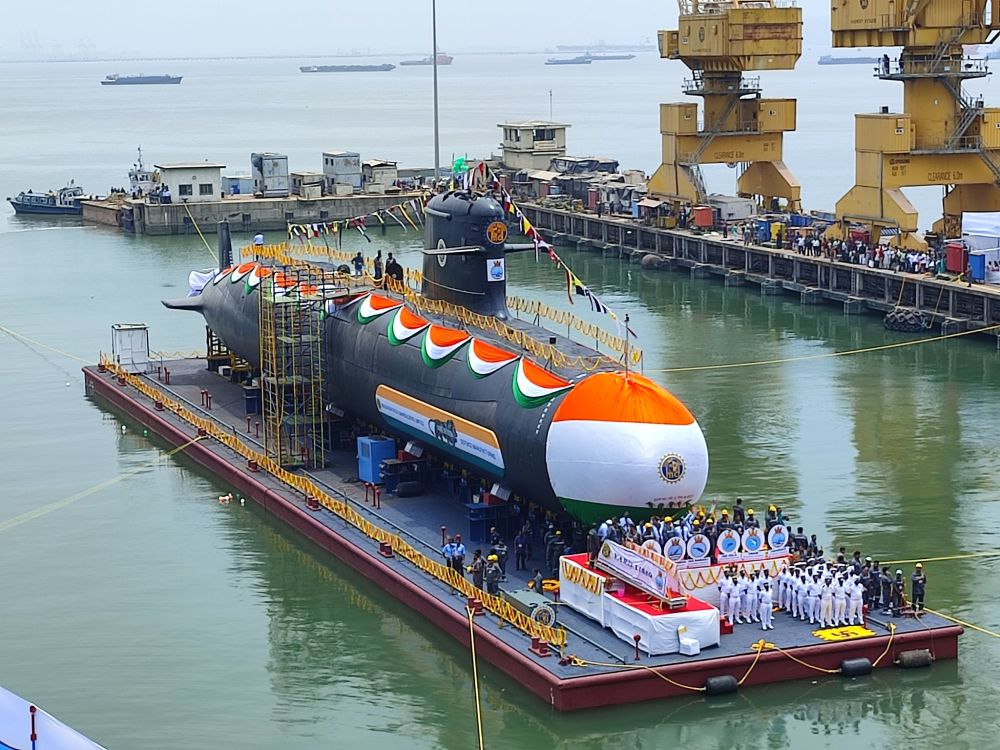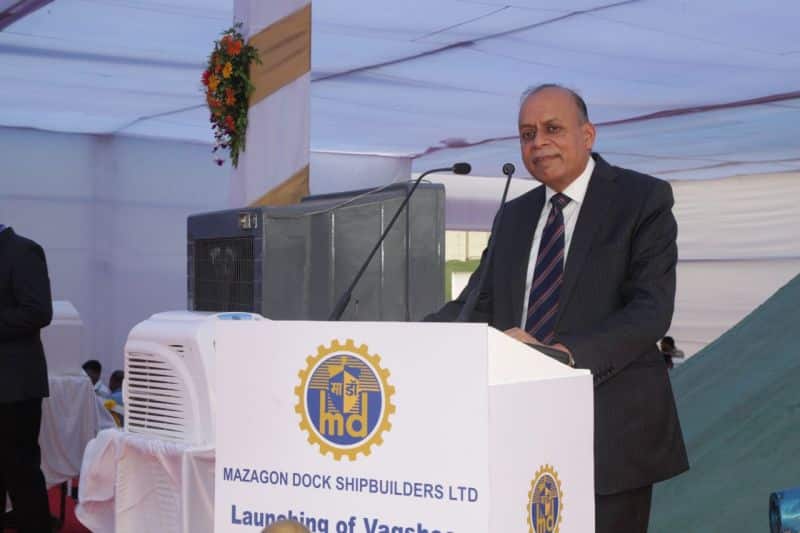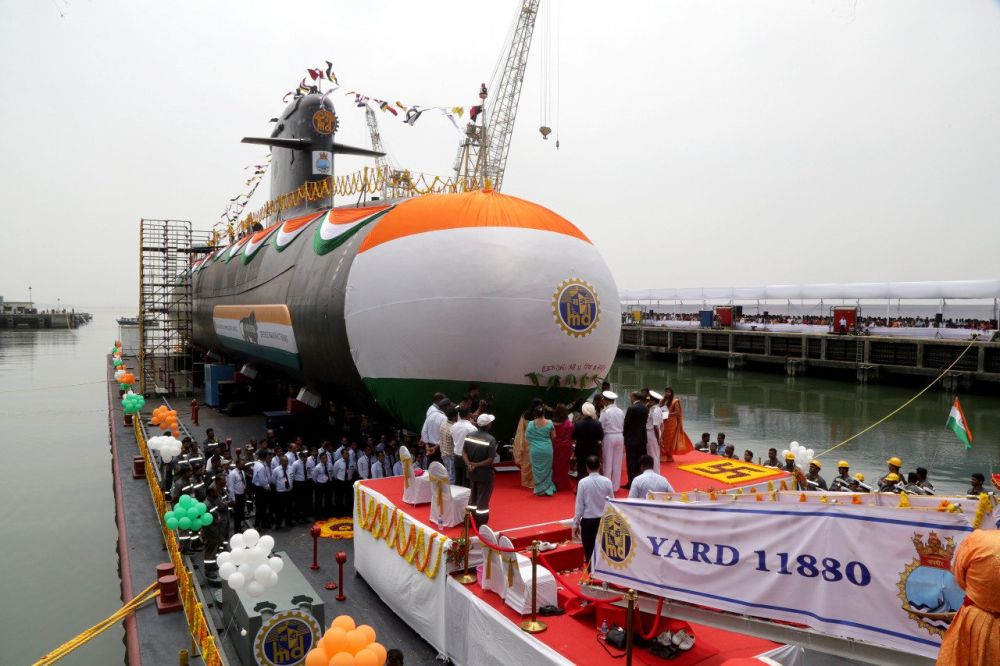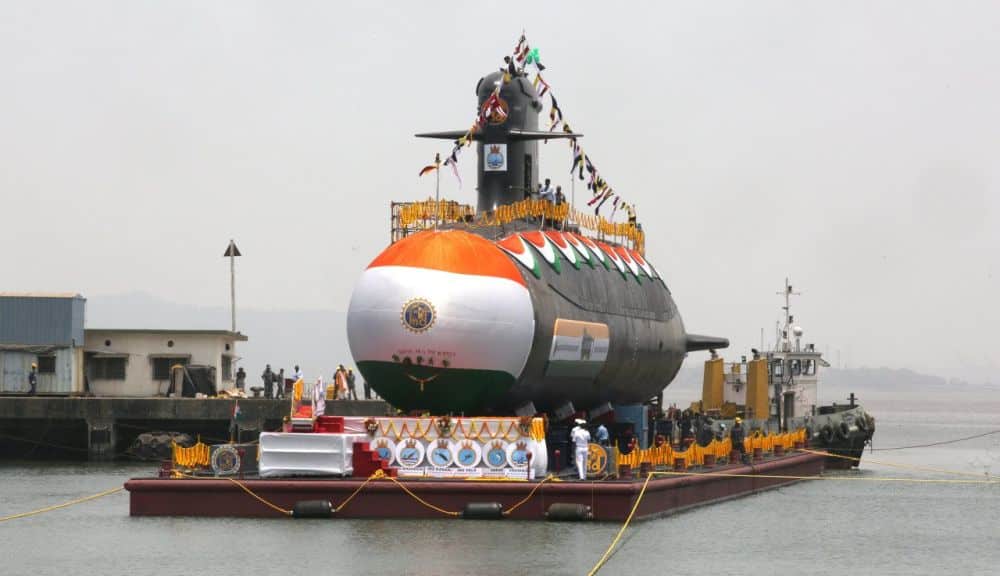The sixth and last of the French, Scorpène-class submarines dubbed Vagsheer, was introduced into the water at Mumbai’s Mazagon Docks Limited (MDL). The sixth submarine is expected to commence setting to work on various equipment and its harbor trials. The crew members will sail the submarine for sea acceptance trials, only after which the submarine would be delivered to the Navy around late 2023.
Ajay Kumar, defense secretary, was a chief guest at the inauguration ceremony and Vagsheer was introduced by Mrs. Veena Ajay Kumar, in keeping with the naval tradition of the launch and naming by a lady.
The six submarines were being built by the MDL as part of Project-75. This was a deal of $3.75 billion that was signed in 2005. The first submarine was named, INS Kalvari. It was commissioned in 2017 while the second was INS Khanderi, introduced in 2019. On the other hand, the third one, INS Karanj, was launched in 2021; and the fourth was INS Vela, which started service last November. The fifth one dubbed Vagir was introduced in 2020 and is currently undergoing sea trials.

Image Credits: @indiannavy
The Navy has chalked its plans for installing an Air Independent Propulsion (AIP) module on the Scorpenes as they undergo a refit. The first in the process to enhance its endurance would be INS Kalvari. The development of an indigenous AIP module by the Defence Research and Development Organisation (DRDO) is in its advanced stages.

Image Credits: @indiannavy
India’s 30-year submarine-building program
A tender to manufacture six advanced conventional submarines under India’s Project-75I is in the Request for Proposal stage. The Indian Navy has a 30-year submarine-building program and after Project-75I, it plans to build and design submarines indigenously.
Right now, the Indian navy has 16 traditional submarines, including eight Russian Kilos, four German HDWs, its indigenous nuclear ballistic missile submarine dubbed INS Arihant, which is in service, and four Scorpenes.

Image Credits: @indiannavy
With delays in submarine induction, the German HDWs and Russian Kilos are going through the Medium Refit Life Certification (MRLC) process to give them 10 – 15 years of additional life.






